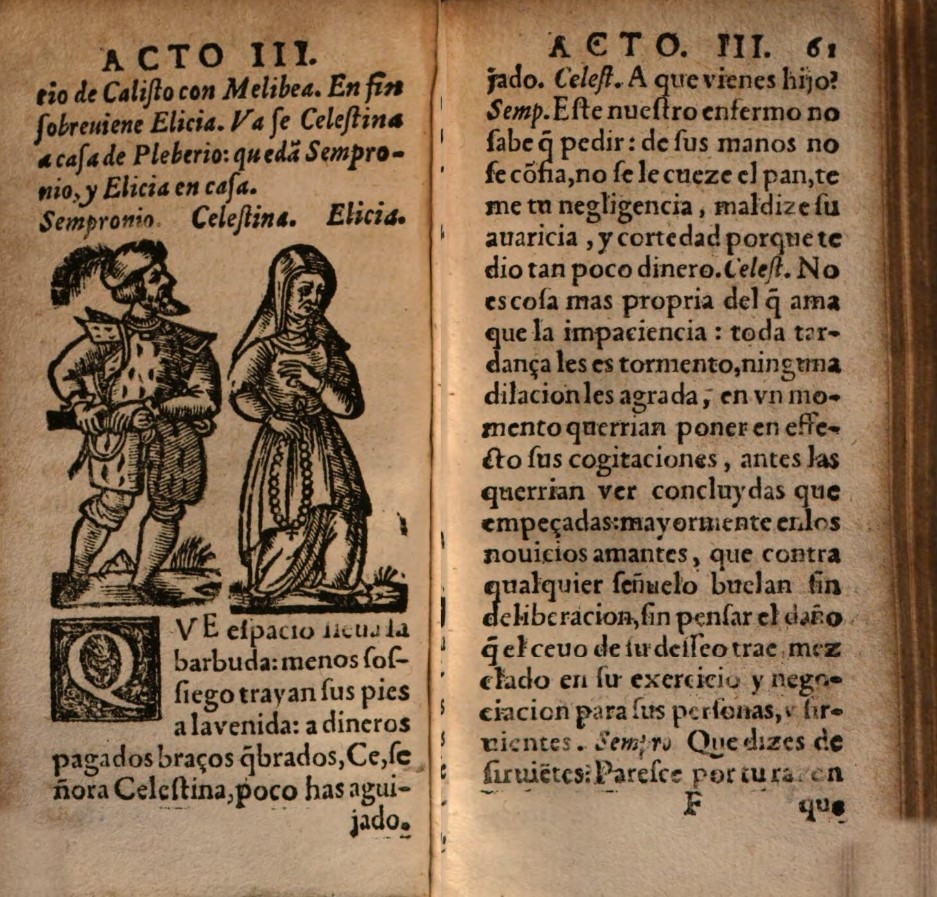Glossary
Playbill/Playbook

Other languages
- Dutch: theateraffiche; theaterfolder; toneeltekst; perioche
- German: Perioche; Theaterzettel
- Italian (specific forms): avviso, libretto d’opera, scenario, manifesto
- Polish: program teatralny, afisz
- Spanish (specific forms): relación de comedia, pasillo de comedia, resumen de comedia, comedias sueltas, argumento (19th c.)
Material form
Printed book, Single-sheet printSubject
Music and performative literature, News and current affairsDescription
The term playbill is used for a bill, placard or poster that advertised plays and was intended for public display. They usually also gave the names of the actors. Playbooks contained the theatre texts themselves.
In England already from the sixteenth century onwards playbooks were printed in the vernacular and in black letter type, aiming at a broad audience. Classical drama for a more exclusive audience was printed in roman type. In order to keep prices low these playbooks hardly contained illustrations.
In Spain, various theatre-related print genres were popular, including several abbreviated renditions of comedies and other plays. Originating in the late 17th century, the relación de comedia was an extract of a theatre play, containing the most famous monologues (relación – relation – thus refers to a narration by a main character). In the 18th century, the pasillo de comedia was a similar short form, containing only the single most important dialogue from a play. The resumen de comedia offered a four-page summary in verse of a play. Comedias sueltas were individually published comedies, usually in quarto, which were produced cheaply and therefore sold to a much wider audience than volumes with multiple comedies. They started to appear in the second half of the 17th century. Their title was printed in large font at the top of the first page, to save the costs and effort of a separate title page.
In Germany and the Low Countries the term used for a program booklet is perioche. These programs were usually quite short (2 to 4 pages). They could contain the time and place of performance, the title, the argumentum (explanation, justification), a summary of the content and sometimes the name of the playwright. From the 18th century onwards also the characters and names of the actors were included. In early modern Germany the term Theaterzettel was also used.
The French word livret or libretto refers to a little book with a short text, usually in verse, of an opera, an oratorio or musical comedy. It contained the sung dialogue, a few spoken passages and brief stage directions.
Related terms
Sources
S. Franchi, Le impressioni sceniche (Roma: Edizioni di Storia e Letteratura 1994).
S. González-Sarasa Hernáez, Tipología editorial del impreso antiguo español, thesis Universidad Complutense de Madrid (2013), 402-405 (‘Comedias sueltas’), 417-418 (‘Pasillo de comedia’), 424-427 (‘Relación de comedia’), 433-434 (‘Resumen de comedia’). https://eprints.ucm.es/id/eprint/24020/
Z. Lesser, ‘Playbooks’, in: J. Raymond (ed.), The Oxford History of Popular Print Culture, Vol. 1 (Oxford: Oxford University Press, 2011), 520-534.
G. Proot, Het schooltoneel van de jezuïeten in de Provincia Flandro-Belgica tijdens het ancien régime (1575-1773) (Antwerp: Universiteit Antwerpen, 2008).
J. Raven, ‘The Book Trades’, in: I. Rivers (ed.), Books and Their Readers in Eighteenth-Century England: New Essays (London: Continuum, 2001), 1-34.
B. Rudin, ‘Von Alexanders Mord-Banquet bis zur Kindheit Mosis. Eine unbekannte Kollektion von Theaterzetteln der Wanderbühne‘, Daphnis. Zeitschrift für Mittlere Deutsche Literatur und Kultur der Frühen Neuzeit 35 (2006), 193-261.
B. Rudin, H. Flechsig, and L. Rebehn. Lebenselixier. Theater, Budenzauber, Freilichtspektakel Im Alten Reich, Schriften des Neuberin-Museums 13 (Reichenbach im Vogtland: Neuberin-Museum, 2004).
E. M. Szarota, Das Jesuitendrama im deutschen Sprachgebiet: Eine Periochen-Edition: Texte und Kommentare (Munich: Fink, 1979-1987).

